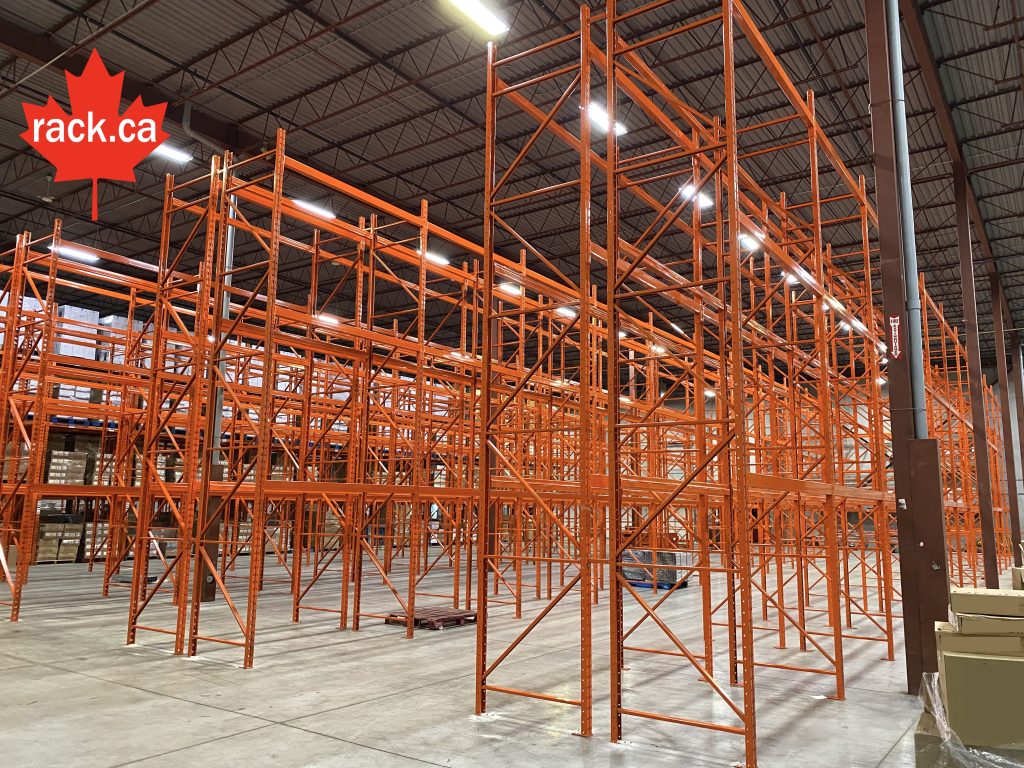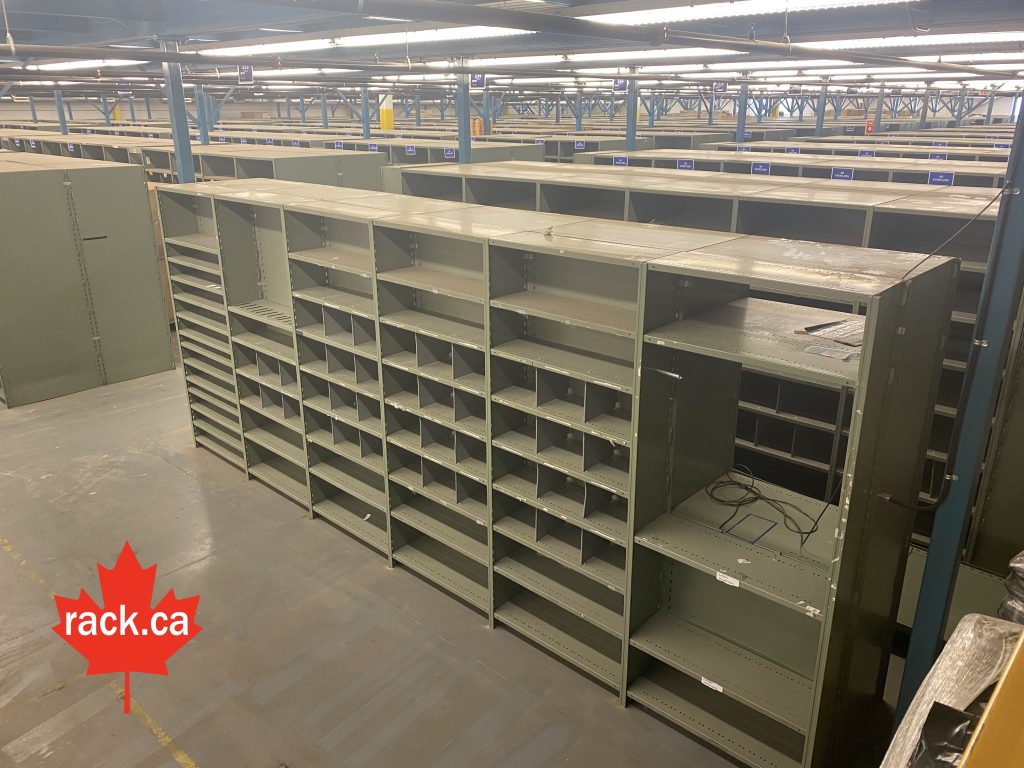In the heart of bustling warehouses, efficient storage is the key to successful inventory management and speedy order fulfillment. Enter warehouse racking and shelving, the unsung heroes of space optimization. Understanding the differences between these storage solutions is vital for warehouse managers. That’s why in this blog post, we will explore the key differences between warehouse racking and shelving.
Understanding Warehouse Racking
Warehouse racking is an intricate system of steel frames and beams that plays a crucial role in product management. Warehouse racking is carefully designed to optimize space, streamline order fulfillment, and enhance productivity.

Types of Warehouse Racking Systems
There are several different types of warehouse racking, including:
- Pallet Racking
- Selective Racking
- Very Narrow Aisle Pallet Rack (VNA)
- Double-Deep Racking
- Drive-In & Drive-Through Racking
- Push-Back Racking
- Pallet Flow Racking
- Carton Flow Racking
- Warehouse Cantilever Racking
Key Features and Characteristics
Warehouse racking systems make the most of vertical space, allowing for efficient storage and easy access. They can accommodate a wide range of goods, from small electronics to large industrial components.
Selective racks offer the freedom for quick retrieval in high-turnover environments, while drive-in systems invite stacked storage, optimizing space for bulk items. Pallet flow configurations ensure efficient inventory rotation and industrial cantilever racking offers strength and modularity to accommodate long, heavy, or oddly shaped items.
All racking structures are built to handle heavy loads and withstand daily use while prioritizing safety for workers and goods alike.
Advantages and Applications
Racking systems utilize vertical space effectively, allowing warehouses to store more items without taking up excessive floor space. These durable and adaptable systems are widely used in retail and logistics industries, enabling quick access, seamless inventory management, and significant reduction in material handling time. By organizing items strategically, businesses can increase productivity and streamline operations, leading to greater success.
Understanding Warehouse Shelving
Warehouse shelving systems are also designed to optimize space and make inventory easily accessible. But unlike towering racks used for bulk storage, industrial shelving is ideal for smaller items. With a versatile and user-friendly design, these shelves eliminate the need for forklifts and allow warehouse personnel to access goods with ease.

Types of Warehouse Shelving Systems
Some examples of warehouse shelving systems include:
- Boltless Shelving
- Modular Drawers
- Bolted Shelving
- Wide Span Shelving
- Hi-Rise Industrial Shelving
- Multi-Tier Shelving Systems
- Used Industrial Shelving
Key Features and Characteristics
These storage champions are built to accommodate items of various shapes and sizes, showcasing their versatility. With interlocking components for stability and easy assembly, they exemplify innovative functionality. The adjustable shelving can handle different load types, sizes, and weights, making them a popular choice for settings that require robustness and flexibility. Their modularity allows businesses to adjust or reconfigure shelves as storage needs change.
Advantages and Applications
Shelving units offer multiple advantages over bulkier racking systems. They provide easy access on all sides, resulting in faster pick-times, and their modularity allows for unmatched flexibility in storage. These systems require less space, operate without heavy machinery, and minimize costs while enhancing workplace safety.
They serve various industrial applications, including pharmaceuticals, hardware depots, archives and records management, and electronic component storage.
Comparison: Warehouse Racking vs. Shelving
| Warehouse Racking | Warehouse Shelving | |
| Structure | Vertical frames and horizontal beams locked together for multi-level storage | Solid, flat planes placed horizontally between uprights |
| Load Capacity | High load capacity | Limited load capacity |
| Accessibility | Accessible with material-handling equipment | Manually accessible |
| Flexibility | Flexible, with multiple configurations for different-sized goods and spaces Less flexible post-installation | Highly flexible pre- and post-installation, with multiple configurations for different-sized goods and spaces |
| Space Utilization | Allows for maximum vertical storage, freeing up floor space | May take up more floor space due to height limitations |
| Inventory Visibility | Limited visibility depending on the depth and height of the structure | High visibility from all sides |
| Cost | Costly | Budget-friendly |
Optimize Your Storage Solutions with Canadian Rack Technologies
Understanding the key differences between warehouse racking and shelving is critical in the concrete jungle of commerce. While warehouse racking systems offer greater storage capacity and versatility, warehouse shelving systems provide easy accessibility and organization. It ultimately comes down to the inventory type, storage space, and budget of each individual warehouse.
Whether you need to store pallets or smaller items, Canadian Rack Technologies Inc. has a wide range of high-quality racking and shelving solutions that can help optimize your warehouse space. Trust our expert team to guide you through shelving and warehouse racking in Toronto and the GTA.
Contact us today to learn more about our products and services!
